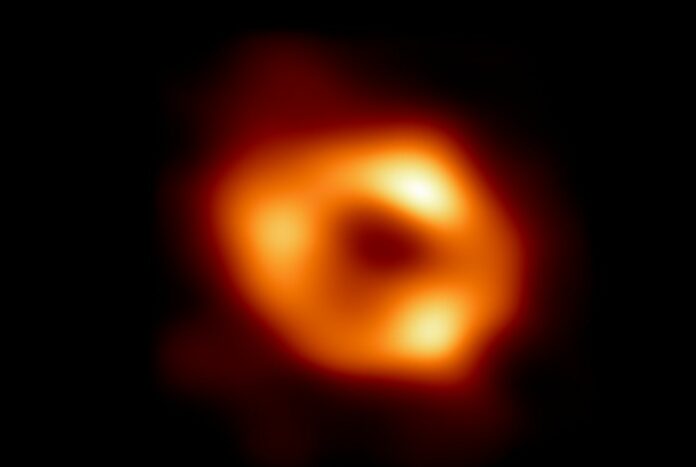Witness the warping of reality as Sagittarius A*, the Milky Way’s central supermassive black hole, spins at speeds that bend light and challenge our understanding of physics.
The supermassive black hole at the Milky Way’s center is reaching near the universe’s speed limit, influencing the space-time continuum itself.
At the very heart of our galaxy, the black hole known as Sagittarius A* is almost hitting its rotational speed ceiling, pulling the space-time continuum along with its rapid spin.
This cosmic giant anchoring our galaxy isn’t merely rotating; it’s whirling at speeds that almost hit its theoretical maximum, carrying nearby matter in its powerful gravitational grasp.
Astronomers have gauged the spin rate of our galaxy’s central black hole, Sagittarius A* (Sgr A*), through observations from NASA’s Chandra X-ray Observatory, which allowed them to study the emissions from material being ejected.
Black hole spin rates are measured on a scale from 0 to 1, where 1 represents the highest speed limit for a black hole’s rotation, a speed that’s a significant fraction of light-speed.
Research led by physicist Ruth A. Daly of Penn State has placed Sgr A*’s rotation between 0.84 and 0.96, signifying it’s spinning close to the maximum rate determined by its own mass.
Their findings were detailed in a recent issue of the journal Monthly Notices of the Royal Astronomical Society, dated Oct. 21.
Unveiling the near-maximum rotation of Sgr A* opens new doors to comprehending the origins of black holes and the complex dynamics of these intriguing celestial phenomena, as shared by Xavier Calmet, a theoretical physicist not part of the study.
The spin of black holes marks a stark difference from other space bodies. While planets and stars have tangible surfaces that govern their rotation, black holes are defined by the event horizon, a boundary beyond which light cannot return.
“While the rotation of a planet or star is governed by the distribution of its mass, the rotation of a black hole is described by its angular momentum,” as explained by Calmet. “Due to the extreme gravitational forces near a black hole, the rotation causes spacetime to become highly curved and twisted, forming what is known as the ergosphere. This effect is unique to black holes and does not occur with solid bodies like planets or stars.”
The spin of black holes doesn’t just alter space-time; it ensnares anything within the ergosphere, a process known as “frame dragging” or the “Lensing-Thirring effect.”
To decode the behavior of space surrounding a black hole, understanding its spin is crucial, which also results in unusual visual effects.
For instance, as light passes near a spinning black hole, space-time’s rotation warps its trajectory, a process known as gravitational lensing. Such distortions can create light rings or even cast a black hole’s shadow, visual proof of a black hole’s gravitational pull on light.
The peak speed a black hole can achieve depends on its matter consumption and growth. Calmet notes that as a black hole engulfs matter, its rotation quickens, up to a point. The black hole’s mass also plays a role; larger black holes have stronger gravity, making it harder to boost their spin rate.
The growth and feeding patterns of black holes play a vital role in their maximum spin speed.
“Additionally, the interaction between the black hole and its surroundings, such as accretion disks, can transfer angular momentum and affect the black hole’s spin,” Calmet adds.
This might help explain why Sgr A*, with a mass about 4.5 million times that of our sun, has a rotation rate between 0.84 and 0.96, whereas the much larger black hole in galaxy M87, despite being 6.5 billion times the sun’s mass, spins at a rate between 0.89 and 0.91.
Image Credit: MIT
